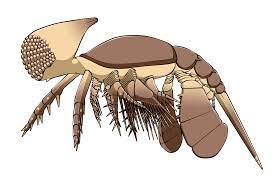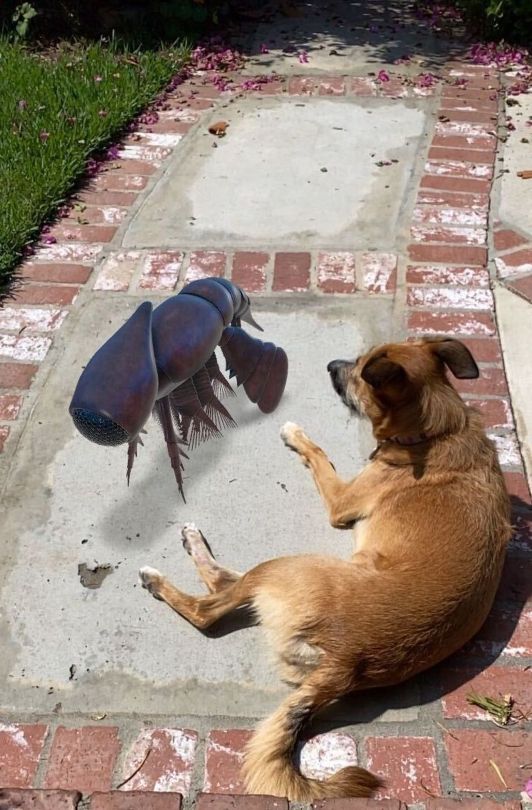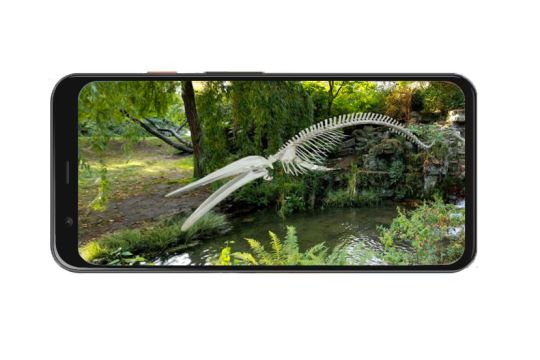#cambropachycope
Text
thanks guys, it did help a lot, drawing creatures is something i really enjoy

@reginaldubel @magicalmysteryperson @scriboniuscurio @thehipovercor @dinojagger12 added a few from discord friends and of my own (damn i misspelled sanqiaspis again)
#my art#creature design#dinosaur#paleo#paleoart#paleo art#scipionyx#dimorphodon#jaekelopterus#longisquama#elasmotherium#myotragus#dimetrodon#sanqiaspis#cambropachycope
350 notes
·
View notes
Text
finally got these guys done. the first one was some suggestions from a friend of obscure creatures. got the idea for daspletosaurus's look from fossil fighter & planet dinosaur


#artwork#art#my artwork#my art#paleo art#paleoart#baryonyx#tully monster#daspletosaurus#chasmosaurus#cambropachycope#aegirocassis#hyracotherium
15 notes
·
View notes
Text
would you still love me platonically if i was a cambropachycope
1 note
·
View note
Text

this thing is literally peak character design.
1 note
·
View note
Note
- Cambropachycope
- Cambropachycope
- Cambropachycope
- Cambropachycope
- Cambropachycope
- Cambropachycope
- Cambropachycope
- Cambropachycope
- Cambropachycope
Oh hell yeah!!! Look at that guy!!
0 notes
Text
what the FUCK (SOOOO affectionate!!!)
extinct little beast. its face is a single compound eye. i love you cambropachycope.
#ohheyisaidthat#arthropod#cambrian fauna#wow what a fucking creature. i love it so so so much!!! look at that HEAD!!!! its just got a big EYE for a face!!!#it looks like a robot who has a big camera lense for a face and i LOVE IT
0 notes
Photo


Cambrian Explosion #59: Stem-Crustacea – Actual Ancient Aliens & Bivalved Buddies
The majority of known fossils of Cambrian crustaceans are in the form of minuscule microfossils with "Orsten-type preservation" – formed in oxygen-poor seafloor mud and exceptionally well-preserved in three-dimensional detail. They can only be discovered and studied after dissolving away the rock around them with acid and picking through the residue under a microscope, then they're scanned with an electron microscope to see their fine details.
And it turns out some of these tiny early crustaceans looked really weird.
Cambropachycope clarksoni is known from a small number of specimens from the Swedish Orsten Lagerstätte (~497 million years ago). And at first this stem-crustacean seems like it's easily one of the most bizarre of all Cambrian animals, looking more like a speculative alien creature design (or possibly a pokémon) than a real once-living animal.
Up to 1.5mm long (0.06"), it had a large pointed "head" bearing a single huge compound eye with up to 150 facets. Its long tapering body had one pair of simple appendages at the front, then three pairs of biramous appendages, and then four more pairs of paddle-like appendages that decreased in size further back.
…But its strange anatomy starts to make a little bit more sense once you figure out what's actually going on: that's not a head.
The "head" is actually just an eyestalk with a pointy projection on the back. Cambropachycope's actual head encompasses the first third or so of its body, with the first appendages being antennae and its mouth located on its underside just behind them. The next three pairs of biramous limbs are other head appendages – probably corresponding to the second antennae, mandibles, and maxilluae of other pancrustaceans – and then the "paddles" are its thorax limbs.
With its huge cycloptic eye and swimming paddles it was probably an active predator preying on smaller planktonic animals, possibly convergently similar to some modern predatory water fleas.
A second very similar-looking stem-crustacean was also found in the same deposits – Goticaris longispinosa – hinting that there may have been an entire weird lineage of these little alien swimmers in the late Cambrian oceans, which the Orsten fossils are only giving us the smallest glimpse at.
———
Meanwhile some of the most abundant animals in Orsten deposits are the phosphatocopids, with around 30 different species known from between about 518 and 490 million years ago.
These tiny arthropods were less than 1cm long (0.4") and had bivalved carapaces completely covering their bodies. They're mostly known just from their empty shells, but some specimens do preserve the rest of them, mostly represented by various early larval stages with the exact anatomy of later larvae and adults being less well understood.
They were traditionally regarded as being true crustaceans and part of the ostracods, and sometimes were lumped together with various other similar Cambrian bivalved groups like the isoxyids and bradoriids – but the similarities between them seem to have been superficial and convergent. More recently phosphatocopids have been considered to be stem-crustaceans instead, very closely related to the true crustaceans but not quite part of that lineage.
Klausmuelleria salopiensis is one of the earliest known phosphatocopids, found in the Comley Limestone deposits in England (~511 million years ago). Just 340μm long (~0.01") it's only known only from a single very early larval stage – often referred to as a "head larva" because it's essentially just a swimming head, with all four of its pairs of appendages corresponding to the head region of older individuals.
Like other phosphatocopids it would have lived just above the seafloor in oxygen-poor waters, and probably mostly fed on suspended particles of organic detritus. Some species had particularly strong spiny gnathobases at the bases of their appendages, however, suggesting they may have also been crushing and manipulating harder food items, possibly "micro-scavenging" on dead small planktonic animals.
———
Nix Illustration | Tumblr | Twitter | Patreon
#science illustration#paleontology#paleoart#palaeoblr#cambrian explosion#cambrian explosion 2021#rise of the arthropods#cambropachycope#klausmuelleria#phosphatocopida#stem-crustacean#pancrustacea#mandibulata#euarthropoda#arthropod#panarthropoda#ecdysozoa#protostome#bilateria#eumetazoa#animalia#art#actual ancient aliens#larva
84 notes
·
View notes
Text

Cambropachycope
Cambropachycope – рід незвичайних ракоподібних, описаний з нижньокембрійських відкладень Гренландії та Швеції.
Повний текст на сайті "Вимерлий світ":
https://extinctworld.in.ua/cambropachycope/
#paleontology#extinct animals#prehistoric#палеонтологія#палеоарт#вимерлі тварини#paleoart#cambropachycope#cambrian#доісторичні істоти#greenland#sweden#made in ukraine#ukraine#ukraineposts
5 notes
·
View notes
Link
0 notes
Text
An ancient crustacean or giant blue whale could be your next houseguests... in AR
An ancient crustacean or giant blue whale could be your next houseguests… in AR

[ad_1]
A crustacean with scores of tiny eyes could be your newest houseguest — in augmented reality, at least.
Google Arts & Culture released new AR offerings in its free app (for both iPhone and Android) Tuesday that allow users to visualize “ancient creatures” wherever you look through your smart phone. One such visitor is the Cambropachycope, a ten-limbed, lobster-like creature with one…
View On WordPress
0 notes
Text
Google makes NASA artifacts and prehistoric crustaceans viewable in AR
Google makes NASA artifacts and prehistoric crustaceans viewable in AR

[ad_1]
Google has made a number of prehistoric creatures and historical artifacts available to view in augmented reality in its Arts and Culture app, the company announced today. If you want to take a closer look at the ancient crustacean Cambropachycope from your living room without having to visit Moscow’s State Darwin Museum, for example, then now’s your chance. Or how about the Command…
View On WordPress
0 notes
Text
جوجل تتيح عرض المخلوقات القديمة بالواقع المعزز
جوجل تتيح عرض المخلوقات القديمة بالواقع المعزز
أعلنت شركة جوجل عن إتاحة عدد من المخلوقات القديمة التي تعود إلى عصور ما قبل التاريخ والتحف التاريخية للمشاهدة باستخدام تقنية الواقع المعزز في تطبيق الفنون والثقافة (Arts and Culture).
وفي حال كنت تريد إلقاء نظرة فاحصة على القشريات القديمة كامبروباشيكوب (Cambropachycope) من غرفة المعيشة الخاصة بك، دون الحاجة إلى زيارة متحف داروين الحكومي في موسكو، فهذه هي فرصتك الآن.
كما يمكنك إلقاء نظرة…
View On WordPress
0 notes
Text
Google atualiza filtros de realidade aumentada do Arts & Culture com seres pré-históricos e artefatos da NASA
O Google anunciou nesta terça-feira (25) uma série de adições aos filtros de realidade aumentada do seu aplicativo cultural, o Google Arts & Culture, que permite agora que o público veja com a tecnologia itens históricos da NASA e seres pré-históricos do porte do Cambropachycope, um dos crustáceos mais antigo do planeta. As novidades são ...
O post Google atualiza filtros de realidade aumentada do Arts & Culture com seres pré-históricos e artefatos da NASA apareceu primeiro em B9.
Google atualiza filtros de realidade aumentada do Arts & Culture com seres pré-históricos e artefatos da NASA publicado primeiro em https://www.b9.com.br/tech
0 notes
Text
Google Features: Now, The Apollo 11 module in Google
Google has brought new features now, the Apollo 11 module in Google search app. Google has long been betting heavily on augmented reality in its search engine. The company has published different models of the human body , animals and even dinosaurs. Now it’s the turn of Google Arts & Culture , Google’s culture app, which has just been updated with new 3D objects and animals.
On this occasion, the protagonists are some prehistoric animals , such as the Cambropachycope, the Aegirocassis or the Lactophrys bicaudalis. We also have a skeleton of the largest animal on Earth, the blue whale (1:20 scale). Finally, Google has added another features, the Apollo 11 lunar module , an astronaut suit, a portrait of Frida Kahlo and the well-known painting “The Kiss.”
In order to access these 3D models, it is necessary to download the Google Arts & Culture application, which is available for free on Google Play and the App Store . Once installed, you can either browse the app to find the augmented reality section, or click on the following links to access it directly.
Cambropachycope
Aegirocassis
Spotted trunkfish
Blue Whale Skeleton
Stella sandeel
Apollo 11 Module
Space suit
Portrait of Frida Khalo
The kiss
The application will open the 3D model and allow us to move it with our finger, but it will also show us a button to show it in augmented reality. It is important to note that it is necessary to have an active network connection, either WiFi or mobile, in order to download the model. Once that is done, you just have to wait for the app to analyze the surface and voila, the object will appear and we can observe it from any angle.
This is what some of the new models look like in augmented reality
The animals and objects have been designed together with different entities, such as the State Darwin Museum in Russia, the Smithsonian National Museum of Natural History in Washington or the Natural History Museum in London. One of the most curious models is that of the Cambropachycope, a 1.5 mm long insect found in Sweden . It is so small that the model is made at a 400: 1 scale. Also striking is the Aegirocassis, a marine animal that lived 480 million years ago. Where we see it, the Aegirocassis measured 2.1 meters.
If we take a look at the space elements, the Apollo 11 lunar module is a recreation of the cockpit that Neil Armstrong, Edwin Aldrin and Michael Collins were in during the first manned mission to the Moon in July 1969. The spacesuit, For its part, it belongs to Neil Armstrong , the first man to set foot on the Moon on July 20, 1969.
The post Google Features: Now, The Apollo 11 module in Google appeared first on Technoeager.
from WordPress https://ift.tt/2D0WkM4
via IFTTT
0 notes
Text
La realidad aumentada de Google te lleva al pasado con criaturas extrañas
La realidad aumentada de Google te lleva al pasado con criaturas extrañas
La realidad aumentada de Google nos ha dejado muchas novedades estos meses. Gracias a ella, los usuarios en España pueden tener dinosaurios en 3D en su propia casa, así como otros animales. Ahora, la firma ha colaborado con el Museo State Darwin de Moscú y el Museo de Historia Natural de Londres para introducir novedades en la misma.
Ya que la realidad aumentada de Google nos dará ahora acceso a una gran colección de animales, aunque en esta ocasión será algo posible en su aplicación Arts and Culture, la app que nos lleva un museo a casa y con la que disfrutar de arte y todo tipo de juegos de lo más divertidos.
Dinosaurios en 3D en tu casa: la realidad aumentada de Google lo hace posible
Google te permite tener dinosaurios de Parque Jurásico en tu casa gracias a su realidad aumentada siguiendo unos sencillos pasos.
Google nos trae animales prehistóricos a casa
A diferencia de ocasiones anteriores, los animales son estáticos en este caso y los podremos ver desde el teléfono, usando la aplicación Arts & Culture de Google, si tenemos un móvil compatible con ARCore. Además, también resulta posible verlos desde el navegador en un ordenador. El problema es que la lista de animales prehistóricos no se encuentra en una categoría o apartado propio dentro de la app en Android.
Por eso, tenemos que acceder manualmente a cada uno de ellos, pulsando en su enlace o usando el buscador dentro de la aplicación. Entre ellos nos encontramos con el Aegirocassis, el Cambropachycope,, el Spotted trunkfish o la ballena azul. También hay objetos muy curiosos, como el Lanzón stella, el módulo de comando de Apollo 11 o el traje espacial de Neil Armstrong. La app nos deja también con obras de arte como los autorretratos de Frida Kahlo o El Beso.
Para disfrutar de ellas tendremos que instalar Google Arts & Culture en nuestro teléfono Android, además de tener soporte para la realidad aumentada de la firma en nuestro móvil. De esta manera vamos a poder disfrutar de estos animales prehistóricos en nuestra casa, como si estuviéramos visitando alguno de estos museos, pero sin salir de casa. La aplicación se puede descargar gratis desde la Play Store:
Google Arts & Culture
Versión:
Autor:
Requiere
INSTALAR
INSTALAR
Tamaño:
La entrada La realidad aumentada de Google te lleva al pasado con criaturas extrañas aparece primero en El Androide Libre.
El Androide Libre https://ift.tt/31pacsI
0 notes